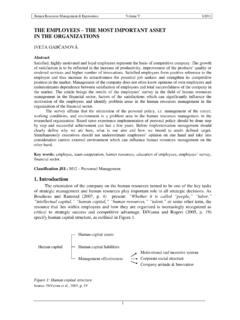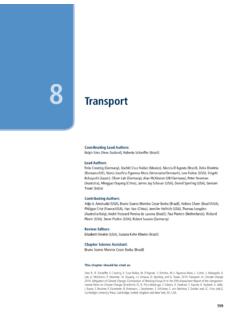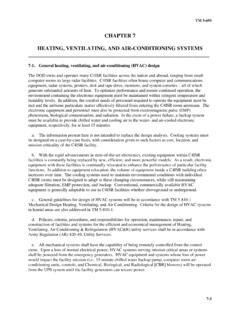Transcription of THE ROLE OF ORGANIZATIONAL CULTURE IN HUMAN …
1 HUMAN Resources Management & Ergonomics Volume IV 1/2010 1 THE ROLE OF ORGANIZATIONAL CULTURE IN HUMAN RESOURCE MANAGEMENT LOTARS DUBKEVICS ARTURS BARBARS Abstract The purpose of this paper is to look into the theories of the ORGANIZATIONAL CULTURE and to analyze an example of one effective organization. In the paper, the questionnaires for evaluation of the ORGANIZATIONAL CULTURE were use. This is the first such kind of empirical research of the ORGANIZATIONAL CULTURE as a background of the HUMAN resource management in Latvia done by using testing and retesting research methods. Practical implications: a need for more management attention to ORGANIZATIONAL CULTURE as a measure for HUMAN potential development. Moreover, a need to recognize a significant role of the CULTURE in organizations effectiveness is emphasizes in this paper.
2 With a sufficient degree of certainty the study can argue that the dominant ORGANIZATIONAL CULTURE type is hierarchical and market (Quinn, Cameron), or bureaucratic ORGANIZATIONAL CULTURE dimension (Wallach), a discussion provoking is relatively high level of supportive organization CULTURE dimension by E. J. Wallach research methodology. ORGANIZATIONAL CULTURE (HRM environment) can be considered as effective as the degree of approximation of the existing and preferred CULTURE in both (staff and management) subculture levels is high. In context of the specific research, we can conclude that an effective ORGANIZATIONAL CULTURE promotes the organization s competitiveness. Key words: ORGANIZATIONAL CULTURE , subculture, value, attitude, competitiveness, HUMAN resource management. Classification JEL: M12 Personnel Management 1. Introduction The present study examines ORGANIZATIONAL CULTURE in a context of HUMAN resource management (HRM).
3 The article offers analysis of a particular business ORGANIZATIONAL CULTURE . On one hand ORGANIZATIONAL CULTURE is an environment for a positive or negative development of the HUMAN potential (Brown, 1998). On the other hand according to E. Schein organizations need to involve a consensus on two sets of issues: - those witch help the group adapt to the external environment; - those witch help the organization to integrate, its internal process internal integration of individuals in organization, in ORGANIZATIONAL CULTURE (Schein, 1985). The second core function of ORGANIZATIONAL CULTURE is to facilitate the development of HUMAN potential, including its innovative and creative potential. ORGANIZATIONAL CULTURE management is in a direct interaction with HUMAN resource management. P. Drucker believes that at the present as well as in the future there is no question of what is the sole and proper organization (also ORGANIZATIONAL CULTURE ) type, because organization is only a tool, which is irrelevant without humans.
4 It is a moral as well as social phenomenon (2003; 2005). 2. ORGANIZATIONAL CULTURE There are dozens of ORGANIZATIONAL CULTURE definitions today. They are all different but not contradictory. ORGANIZATIONAL CULTURE is associated with behavior (also leadership style), language, rituals, ceremonies, myths, heroes, etc. (Dubk vi s, 2009). It means artifact the more visible and conscious level. Most of the authors of management science define ORGANIZATIONAL CULTURE as value system which determine attitude (Vanaerde, Jowrnee, 2003; Schein, 1985, 1990; Kets de Vries, 2001; Barets, 2008; Peters, Waterman, 1982; Taormina, 2004). HUMAN Resources Management & Ergonomics Volume IV 1/2010 2 Values are defined as ideas and objects with a special meaning on a personal as well as ORGANIZATIONAL level (Dubk vi s, 2009). They determine basic assumptions about the reality, HUMAN nature and relationships.
5 Attitude is valuation. It is described by a cognitive aspect (positive or negative views), affective aspects (emotions and feelings), and behavioral aspects (specific actions) towards persons and objects (Warr, 2002). Edgar Shein is the author of the most popular ORGANIZATIONAL CULTURE definition: ORGANIZATIONAL CULTURE is .. a pattern of basic assumption invented, discovered, or developed by a given group as it learns to cope with its problems of external adaptation and internal integration that has worked well enough to be considered valid and therefore, to be taught to new members as the correct way to perceive, think, and feel in to those problems , (1985, p. 9). ORGANIZATIONAL CULTURE is a complex phenomenon. Therefore management science must take into account insights from different social sciences: sociology, anthropology, psychology and philosophy.
6 G. Hofstede and G. J. Hofstede believe that the relationship between society, organization and individual is just as natural as link between a garden, a bouquet of flowers and a flower , (2005, p. 304). ORGANIZATIONAL CULTURE research requires an integrative approach. In near as well as distant future innovation most likely is expected in parallel worlds contact of various social sciences in sensitive and so creative points. Most famous bipolar classifications of the ORGANIZATIONAL CULTURE are: strong/weak, functional/dysfunctional, efficient/inefficient, positive/negative cultures (Dubk vi s, 2009). T. Deal and A. Kennedy determined five major signs of a weak ORGANIZATIONAL CULTURE : - unclear, inadequately identified value system; - organization has no internal consensus on how they reach their targets and what instruments they use; - existing subcultures in the organization have different views; - ineffective leadership; - ceremonies and rituals are disorienting, even contradictory (Deal, Kennedy, 1982).
7 Weak ORGANIZATIONAL cultures are characterized by a high level of cultural entropy a proportion of energy wasted on non-productive activities by a group of people (Barets, 2008). Weak ORGANIZATIONAL CULTURE indicates a weak HUMAN resource management (HRM). Any ORGANIZATIONAL CULTURE consists of subcultures. Subcultures are relatively independent systems of values, norms and behavioral stereotypes that exist in a cultural context and are not in a sharp conflict with it (Zepa, 1997). E. Schein determines three general subcultures which exist in every organization: - subculture of employees; - subculture of creators; - management (leadership) subculture (Schein, 1985). Leadership issues are functionally important for shaping and managing the ORGANIZATIONAL CULTURE leadership in organization defines the CULTURE . M. Kets de Vries compares organizations with cars: driverless cars run only downhill.
8 People are necessary for cars to really work and the right people by the steering wheel (Kets de Vries, 2001). On the other hand leadership is a group phenomenon. It is popularly argued that HUMAN resource professionals are able to play an important role in managing key elements of CULTURE (symbols, rites, rituals, norms of behavior, beliefs, values and assumptions). Therefore in the context of this paper, the study is based on a diversion between staff and leadership subcultures. It determines the basic research criteria for ORGANIZATIONAL CULTURE evaluation: HUMAN Resources Management & Ergonomics Volume IV 1/2010 3 - typological matching degree of the ORGANIZATIONAL CULTURE on staff and leadership subculture levels; - degree of approximation between the existing and the preferred ORGANIZATIONAL CULTURE models in both subcultures; - degree of approximation of the ORGANIZATIONAL CULTURE values in both subcultures.
9 This research is based on assumptions that effective ORGANIZATIONAL CULTURE is characterized by a high degree of approximation between subcultures in all levels of research criteria. 3. ORGANIZATIONAL CULTURE typology theories Today there are about one and a half dozen of typological theories. R. Quinn and K. Cameron determine four basic types of ORGANIZATIONAL CULTURE : - hierarchy CULTURE ; - market CULTURE ; - clan CULTURE ; - adhocracy CULTURE . This typology is based on four criteria: flexibility and discretion; stability and control; external focus and differentiation; internal focus and integration (Figure 1). Figure 1: Competing Values Framework Source: Cameron, Quinn, 1999, p. 32 Each ORGANIZATIONAL CULTURE type is characterized by a certain type of competing values, which in turn describe the environment of HRM (Cameron, Quinn, 1999). In terms of typology it is very similar to E.
10 Wallach theory (Wallach, 1983). E. Wallach uses a term cultural dimensions to emphasize that the cultures are not monolithic, but multidimensional subculture phenomenon and that we can only talk about the dominants. This author determines three main cultural dimensions: - bureaucratic; - innovative; - supportive. Clan Adhocracy Hierarchy Market Stability and control Internal focus and integration External focus and differentiation Flexibility and discretion HUMAN Resources Management & Ergonomics Volume IV 1/2010 4 Difference between opinions of the authors is more terminological. The similarity of both theories is reflected in Table 1. Table 1: Characterization of K. Cameron, R. Quinn and E. Wallach ORGANIZATIONAL CULTURE types/dimensions ORGANIZATIONAL CULTURE types by K. Cameron and R. Quinn ORGANIZATIONAL CULTURE dimensions by E. Wallach Core values of the ORGANIZATIONAL CULTURE (HRM environment) Individual motivation for development of the of HUMAN resource potential (McClelland, 1967) Hierarchy (similar to market but characterized with a stronger market orientation) Bureaucratic Efficiency, results orientation, stability, power, control, loyalty, competition Power Adhocracy Innovative Personal creative freedom, orientation towards change, innovation, risk Achievement Clan (family type CULTURE ) Supportive Unity ( we consciousness), team, loyalty, mutual respect, trust, trust in tradition Affiliation Source: own comparison Table 1 also includes individual motivation, which is one of the key components of HRM.








